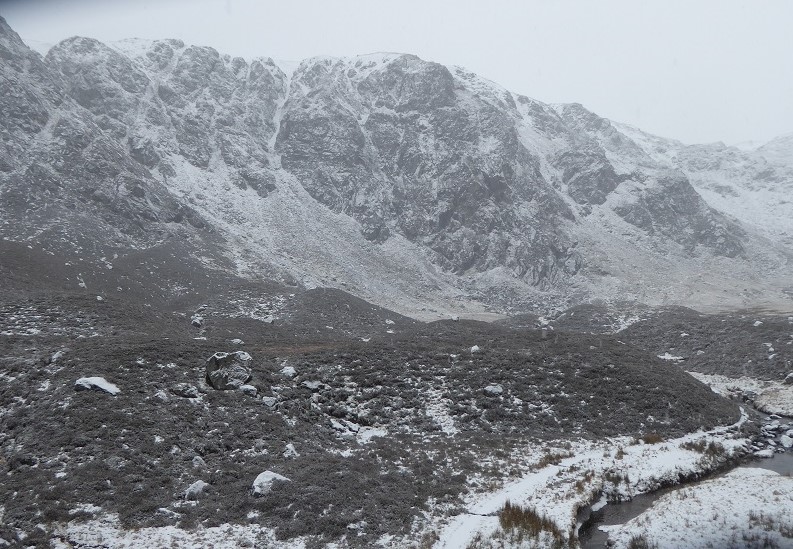
I was alerted to Scottish Natural Heritage’s consultation on the Corrie Fee National Nature Reserve “We want to hear your views on our proposed management and any additional ideas you would like us to consider” through Mountaineering Scotland news (see here). The consultation (see here for draft management plan and excellent history) is open until the end of February and, because I was staying at the Carn Dearg Mountaineering Club’s brilliant Hut in Glen Clova at the weekend, I took a look myself as part of a day out (Look C Gully was not there, B Gully was marginal so we wandered up Gully A). This post looks at some the implications of the Coire Fee consultation for how the wider Cairngorms National Park is managed. I hope others may feel inspired to respond to NNR@snh.gov.uk.
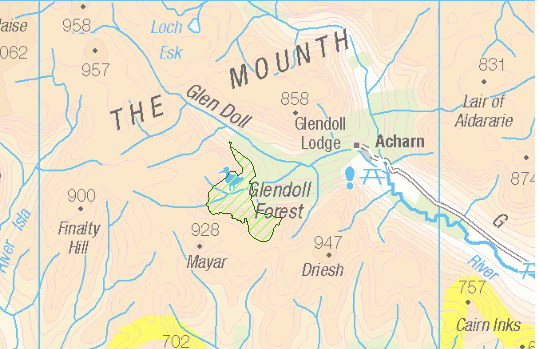
 Corrie Fee is a gem of a coire. Approaching from Glen Doll you ascend through forest and suddenly, just after the NNR sign you emerge on the top of what was once a terminal moraine for the coire glacier. Below the coire floor is covered by smaller hummocky moraine while ahead are the crags, famous for their Alpine plants and ice climbing. The NNR is very small, only 164 hectares of land, and is owned by SNH having been purchased from the Forestry Commission It is as a consequence sandwiched between forestry below and deer “forest”/grouse moor above.
Corrie Fee is a gem of a coire. Approaching from Glen Doll you ascend through forest and suddenly, just after the NNR sign you emerge on the top of what was once a terminal moraine for the coire glacier. Below the coire floor is covered by smaller hummocky moraine while ahead are the crags, famous for their Alpine plants and ice climbing. The NNR is very small, only 164 hectares of land, and is owned by SNH having been purchased from the Forestry Commission It is as a consequence sandwiched between forestry below and deer “forest”/grouse moor above.
It was however formerly part of the much much wider Caenlochan NNR which was created in 1961 and covered 3639 hectares of land all the way over to Caenlochan at the head of Glen Isla. This was de-registered in 2003, the year the Cairngorms National Park was created, because:
“Almost all of the Caenlochan NNR was owned by private landowners and managed as commercial sporting estates. After considerable discussion and further assessment SNH decided that three of the four (new) essential attributes of a NNR (primacy of nature, security of tenure and best practice management) could not be met.”
I have to confess, to my shame, that I was a party to that decision, having been appointed to the Main Board of SNH that year. I now believe that this was a terrible mistake which helped undermine the conservation potential of our National Parks. I will reflect on what went wrong and what is still going wrong – we have moved from designating NNRs to re-designating them, most recently at Mar Lodge estate in November 2017 – in a future post on the history of NNRs in our National Parks. In respect of Coire Fee, however, I was somewhat relieved to find today on checking my old SNH Board Papers for September 2003, that alongside the recommendation to de-designate Caenlochan and retain Corrie Fee as a NNR I had scribbled “Can you just protect that bit from overgrazing?”. I cannot recall the answer and its not recorded in the minutes but I believe it was and still is the right question.
The implications of fencing Corrie Fee
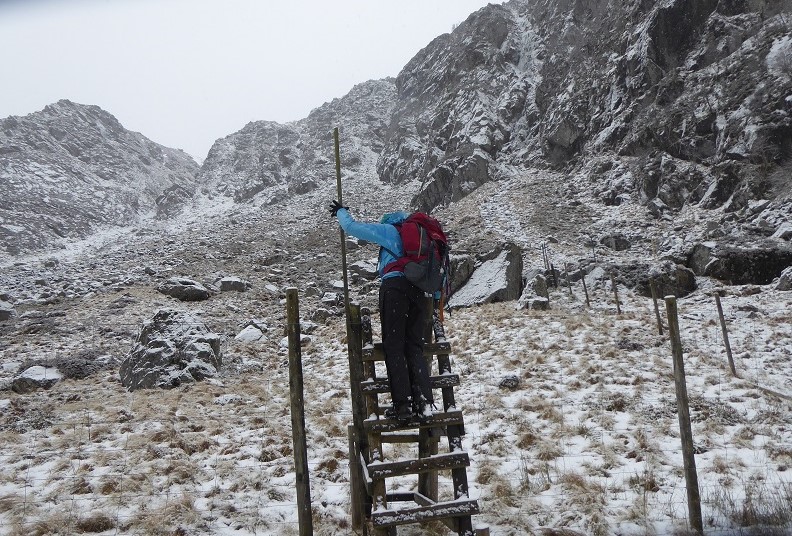

SNH history of the NNR, the story of Coire Fee, explains some of what is wrong with the fence:
A fence was erected in 1991, reduced to an area of around 60 ha in Corrie Sharroch, due to practicalities and cost. While every effort was made to select a fence line that allowed access and was not too obtrusive scenically, an exclosure is not an ideal solution because as well as impacting on landscape and recreational use, some grazing is needed to stop grassland areas from becoming too rank which may hinder the regeneration of willows and other plants.
While the fence has not kept deer out – we saw deer footprints in the snow under B Gully – it probably excludes larger mammals, such as foxes, from the NNR. This reduces the extent to which the NNR is a place where nature has primacy but, as importantly, gives the wrong message to landowners, that fencing is an appropriate way to manage open hill land.
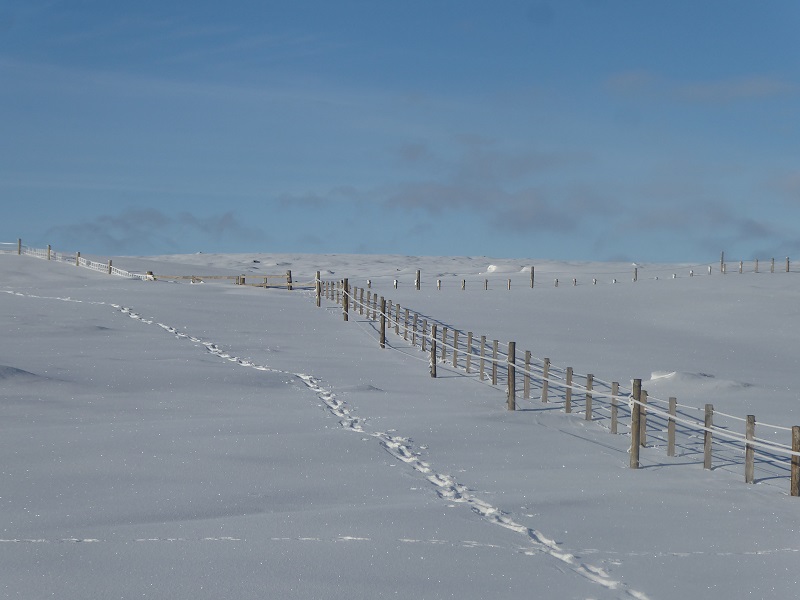
While SNH continues to enclose land with fences, albeit for the best of intentions – the rare Alpine plants in Coire Fee have recovered as a result of a reduction in grazing pressure – its very hard for either SNH or the Cairngorms National Park Authority to object to fences close by or to make a case that all new fencing should require National Park approval. We saw a good example of terrible fencing the next day (above).
While the wider Caenlochan area is still designated as a Site of Special Scientific Interest, Special Protection Area for birds and Special Area of Conservation for plants the action being taken there to reduce deer numbers has not been sufficient to enable SNH to recommend removal of the Corrie Fee fence:
Our top priority is to manage the internationally important rare montane habitats and associated arctic-alpine plants found in Corrie Fee NNR. To do this we need to ensure that the fenced exclosure in Corrie Sharroch allows low herbivore grazing pressure to be maintained. The impacts from deer are being addressed across Caenlochan SAC as part of a Deer (Scotland) Act Section 7 agreement, with the primary object to achieve favourable condition of all the Natura Habitats and SSSI features of the area. The reduced grazing pressure since the last reserve plan has successfully resulted in both an increased diversity of plant species and increased extent of habitats sensitive to grazing pressures. For example, tall herb communities and Yellow Oxytropis are both benefitting from management. Rare habitats and species of restricted distribution such as Mountain Willow Scrub, Alpine Milk-Vetch and Purple Colt’s Foot may require more intervention to increase their abundance in the NNR. We would like to work with partners at the landscape scale, in order to investigate opportunities to increase biodiversity in the wider area around Corrie Fee. This may include felled areas of forest in Glen Doll.
To put it another way, Coire Fee is a gem which is regaining its shine but still surrounded by dross.
I don’t doubt the desire of SNH staff to work with partners at the landscape scale but the draft management plan contains NO proposals for how this should happen. This is little different to the Cairngorms National Park Authority whose National Park Partnership Plan, agreed last year, set out a vision for conservation at the landscape scale but was short on any effective means to achieve this. The problem is exactly the same as when I was on the Board of SNH in 2003: there are still no effective means for ensuring landowners co-operate with conservation objectives such as reducing deer numbers to allow vegetation to recover, whether in NNRs or in a National Park.
The draft SNH management plan though does propose one suggestion which I believe needs to be strongly supported:
Consider intentional supplementary feeding for eagles etc by leaving occasional deer carcasses
This is a brave suggestion because, when other organisations have tried to do this like John Muir Trust on Knoydart, there has been an outcry in the press (see here) which deliberately plays on the British public’s love for animals. SNH are undestandably being far more cautious than JMT. They are only proposing to leave the occasional deer carcase in place (a very sensible thing to do given the difficulty of extracting dead deer from the steep slopes below the crags) rather than the sort of mass culls which might enable the deer fence to be removed completely. Still, this could help set a precedent which could be applicable to areas of wild land where it is very difficult to extract deer carcases. I believe that if we want both to reduce deer numbers and protect the landscape from a proliferation of hill tracks, we need to win the argument that some deer carcases should be left where shot.
I would, however, suggesting rewording the proposal slightly:
“As part of the management of deer numbers, where deer are culled in areas difficult to access, carcases may be left in situ which would have the benefit of providing food for other animals, including golden eagles”.
It will be interesting to see if the Scottish Gamekeepers Assocation and neighbouring landowning interests object on the back of their objections to the JMT culls. Given the mass culls of mountain hares in the eastern Cairngorms and the history of dumping these animals in stink pits, such objections will be open to charges of hypocrisy. The last thing landowning interests will want, however, given much of their land management practices are designed around removing the food sources of anything that might prey on red grouse, is anything that could help restore golden eagle numbers in the eastern Cairngorms.
The Coire Fee NNR and the Forestry Commission
Below Coire Fee, in Glen Doll, commercial forest currently predominates although the Forestry Commission is making some attempts to restructure this in favour of native trees and open areas at the top of the plantation which could allow space for alpine plants and willow scrub to recolonise:
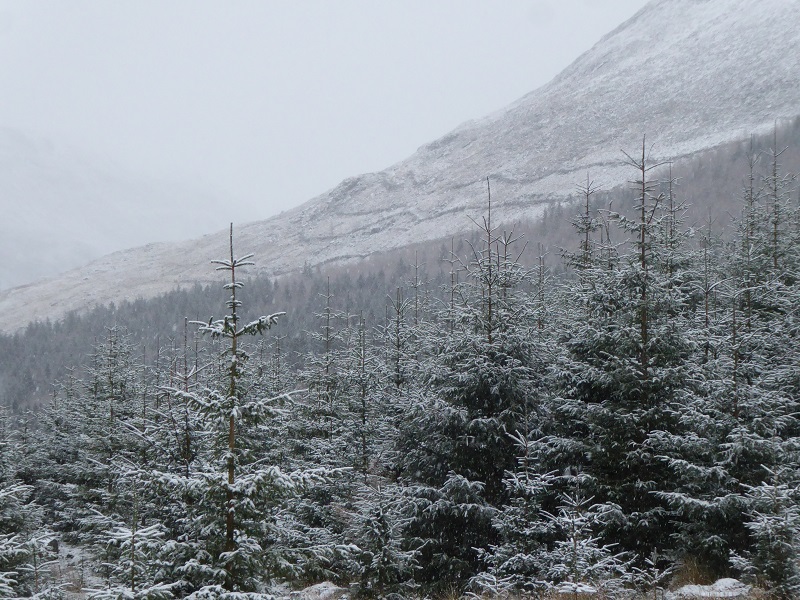
There are NO concrete proposals from the Forestry Commission about how they could help expand the NNR’s at a landscape scale despite all the land they own in Glen Doll. I am not surprised because a consequence of austerity is that every public authority defends its own budgets and as a result partnership working has become less and less effective – despite the exhortations to the contrary. I would therefore like to propose a practical measure which could be achieved for little cost.
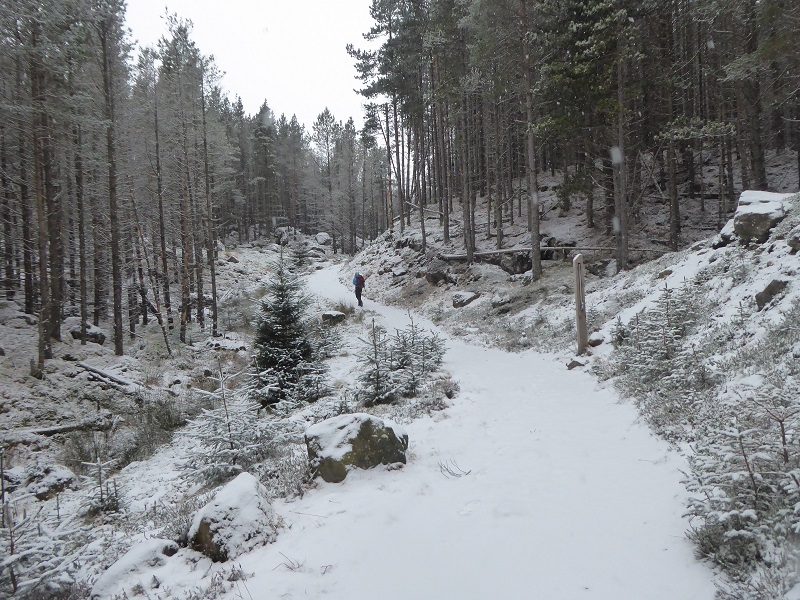
The forest track up to Coire Fee ends at a turning area and above that a wide path heads more steeply up moraine to the edge of the forest. The end of the forestry track marks both a landscape boundary, with a transition to large scale moraine, and an ecological boundary as beyond it native trees predominate. So why not extend the northern boundary of the NNR downhill over the moraine to the end of track?
All that the Forestry Commission would need to do then is remove the non-native trees from the moraine slopes and let nature take its course. The potential to create the sort of open wooded moraine landscapes encountered elsewhere in Europe is huge and it could eventually help promote a gradual transition from Scots Pine dominated native woodland to montane will scrub which is so lacking in Scotland. It would fit with the aspiration of the proposed management plan that:
Distinct moraine flutes from the last time ice flowed, some 12,000 years ago, can be glimpsed from the woodland path in Glen Doll on the way up to Corrie Fee [so why not include these in the NNR?]. The altitudinal range in the NNR is important and its rich diversity of upland and sub-montane habitats with associated species is maintained through sustainable deer and woodland management as well as restoration projects of the montane willows [so why not extend this lower down?].
So why is there no consideration of this in the draft management plan?
What needs to happen?
SNH’s public consultations on its NNR management plans provide a great opportunity to re-think how land is managed in our National Parks to help further the objectives of the Cairngorms National Park Authority. What is needed is more public debate about how the objectives of our National Nature Reserves could be applied to wider areas within our National Parks and for our public authorities to be brave enough (as I wasn’t in 2003) to make specific proposals for how these might be achieved. In respect of Corrie Fee here are some suggestions:
- Both SNH and the CNPA should state how far numbers of deer need to reduce to on neighbouring estates before the Corrie Fee fence can be removed. They should then be using the compulsory powers they have to achieve this.
- The CNPA, FCS and conservation organsations should strongly support the SNH proposal that occasionally leaving deer carcases on the hill is a positive way forward for deer management
- The CNPA should be calling on FCS to commit to extending the NNR further downhill into the Glen Doll Forest and SNH should start negotiations with FCS about how this could be made to happen.

Just a note on some of your observations so that people are not misled.
The “tight meshed fencing” in your photo on Tirren/Green Hill is what is called rylock a commonly used sheep fencing. You can rest assured Hares can pass through it no bother.
In your photo of the Scorrie trees the lines you regret to as logs are what is commonly known as hag, that is the branches from harvested trees. It will all be less than 50 mm in diameter so hardly a log. In some cases it is baled to produce heat in biomass heating systems.
Should also add there is a number of golden eagles in the upper part of Clova that range far and wide. Sure there could be more .
Your stuff about the access is interesting, you may not be aware but Balmoral also extends into Clova….
Thanks very much for this, have corrected the post and removed reference to the fence excluding hares but kept references to foxes in – would that be right? (Incidentally one reason I reached this wrong conclusion was there was no sign of any mountain hare prints inside the fence). Thanks too for the name of the chopped branches – I took a look through the zoom on my camera and they looked bigger than 50mm but neither my eyesight nor camera zooms are that reliable! In landscape terms its a mess and would be good if used in biomass heating but Glen Clova is so depopulated I guess that is not really feasible………….you may have seen my second post on all the signage at head of Glen Clova: The Balmoral no drones sign was on the gate as you turn into the carpark but had not realised before the estate extended as far south as it does. Nick
No worries.
The fence, a fox will easily jump a rylock fence. Hares if you were up on Sunday 4 there had been fresh snow during night and I saw 40 plus hares on walk up to top of Tirren most below snow line. Even had a shrew running over the top of snow on the top of plateau!
Hag is relatively light compared to logs so value is much more marginal particularly on steeper area. Whilst being unsightly it can also act as a cover to allow some species to establish.